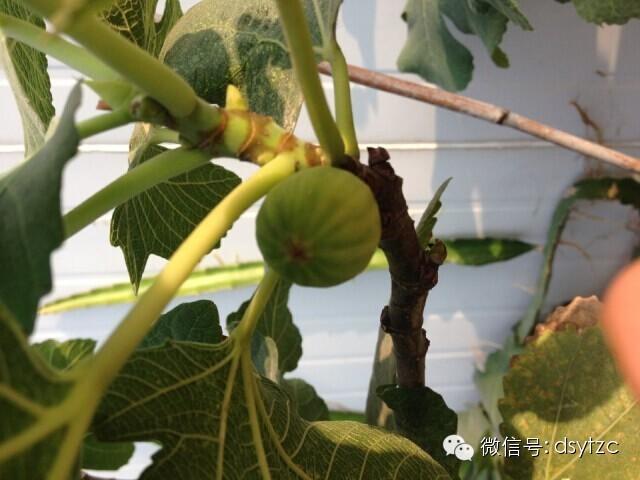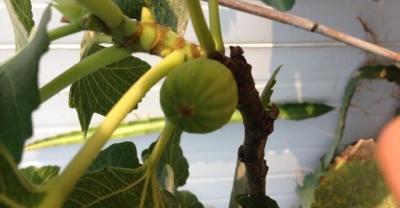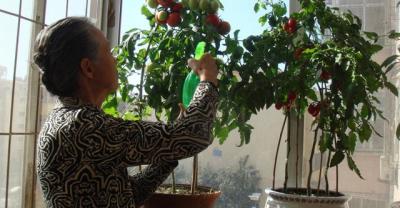Potted fig planting

Fig, also known as natural son, because of its high nutritional value, it can not only detoxify, inhibit blood sugar, but also contain a variety of anticancer substances. Therefore, together with the mysterious fruit, it is praised by fruit friends as the two most worthy balcony fruits to be planted.
Pot planting
The size and quality of the container determine the volume and growth potential of potted roots. Figs are shallow-rooted fruit trees. When planting figs on the balcony, clay pots with a diameter of 40 centimeters and a depth of 25 centimeters are the most suitable. In addition, figs do not have high requirements for soil conditions, and they are most suitable for growth in neutral to alkaline soils with deep, fertile, loose and good permeability. Therefore, the pot soil can be made from 2 parts of sandy loam, 1 part of vermiculite, 1 part of barnyard manure, or 2 parts of garden soil, 2 parts of peat and 1: 2 kg compound fertilizer. The time of putting on the basin can choose the middle and late March, and it is best to put tiles on the leakage hole pad at the bottom of the basin before going on the basin.
Fertilizer and water management
In early June, apply primary diammonium phosphate or potassium dihydrogen phosphate with a dosage of 0. 5%. About 3 kg, dissolve with water and pour the fertilizer liquid evenly into the basin. Compound fertilizer containing nitrogen, phosphorus, potassium and trace elements can be applied once in late August, with a dosage of 0. 5%. About 1 kg. Paclobutrazol can be sprayed on leaves at the beginning of June by diluting paclobutrazol to 300 × 500 times, spraying once every 15 days for 2 times continuously, which can inhibit the growth of new shoots, shorten the distance between nodes, make the branches stout, and promote inflorescence differentiation and fruit development. Sparse buildings and light rain especially remind that fig trees can resist drought and waterlogging, can be extensive in water management, and should not be watered too much, especially in the fruit ripening period, too much water will aggravate fruit cracking.
Shaping and pruning
As the growth rate of fig trees is amazing, potted figs should pay special attention to shaping and pruning. When pruning, first, the plant should be short, and it should be truncated at 15cm to 20cm after it is put on the pot. Second, it is necessary to control vegetative growth and cultivate compact trees with dense branches and short branches. Fig branches are divided into long branches, middle branches and short branches, all of which can bear fruit. Flower buds differentiate from the axils of the basal leaves of the petiole and develop into fruit. Sparse buildings and light rain suggest that during the peak growing season of fruit trees in May and June, pruning methods such as coring, wiping buds, and pulling branches should be used to control the vigorous growth of branches, so as to cultivate short and sturdy medium and short branches between internodes and increase the density of hanging fruit.
Daily maintenance
Try to put the tree basin in a well-lit, ventilated place, preferably where the light can reach directly, such as the sunny balcony and the sunny courtyard floor.
(article / vegetable bar editor: caiba_org)
- Prev

Common sense and planting skills of crabapple flowers
"Li Li is the most suitable for new rain, and Jiao Rao is all when she is about to open." The begonia written by the poet always brings these tender words, and through the ages, there have been countless literati poets.
- Next

Pot planting method of towel gourd
In recent years, deeply affected by food safety problems, many people use their own idle balconies, because the balcony space is limited, so potted plants.
Related
- Fuxing push coffee new agricultural production and marketing class: lack of small-scale processing plants
- Jujube rice field leisure farm deep ploughing Yilan for five years to create a space for organic food and play
- Nongyu Farm-A trial of organic papaya for brave women with advanced technology
- Four points for attention in the prevention and control of diseases and insect pests of edible fungi
- How to add nutrient solution to Edible Fungi
- Is there any good way to control edible fungus mites?
- Open Inoculation Technology of Edible Fungi
- Is there any clever way to use fertilizer for edible fungus in winter?
- What agents are used to kill the pathogens of edible fungi in the mushroom shed?
- Rapid drying of Edible Fungi

